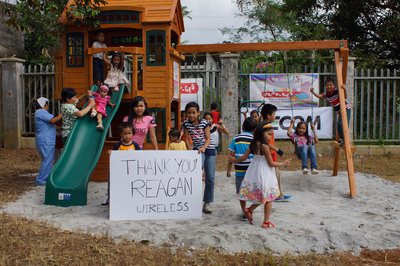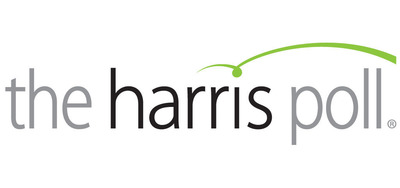1600
English scientist,
William Gilbert first coined the term "electricity" from the Greek word for amber. Gilbert wrote about the electrification of many substances in his "De magnete, magneticisique corporibus". He also first used the terms electric force, magnetic pole, and electric attraction.
1660
Otto von Guericke invented a machine that produced static electricity.
1675
Robert Boyle discovered that electric force could be transmitted through a vacuum and observed attraction and repulsion.
1729
Stephen Gray's discovery of the conduction of electricity.
1733
Charles Francois du Fay discovered that electricity comes in two forms which he called resinous(-)and vitreous(+).
Benjamin Franklin and Ebenezer Kinnersley later renamed the two forms as positive and negative.
1745
Georg Von Kleist discovered that electricity was controllable. Dutch physicist, Pieter van Musschenbroek invented the "Leyden Jar" the first electrical capacitor. Leyden jars store static electricity.
1747
Benjamin Franklin experiments with static charges in the air and theorized about the existence of an electrical fluid that could be composed of particles. William Watson discharged a Leyden jar through a circuit, that began the comprehension of current and circuit. Henry Cavendish started measuring the conductivity of different materials.
1752
Benjamin Franklin invented the
lightening rod - he demonstrated lightning was electricity.
1767
Joseph Priestley discovered that electricity followed Newton's inverse-square law of gravity.
1786
Italian physician,
Luigi Galvani demonstrated what we now understand to be the electrical basis of nerve impulses when he made frog muscles twitch by jolting them with a spark from an electrostatic machine.
1800
First electric
battery invented by
Alessandro Volta. Volta proved that electricity could travel over wires.
1816
First energy utility in US founded.
1820
Relationship of
electricity and magnetism confirmed by Hans Christian Oersted who observed that electrical currents effected the needle on a compass and Marie Ampere, who discovered that a coil of wires acted like a magnet when a current is passed thorough it.
D. F. Arago invented the electromagnet.
1821
First electric motor invented by
Michael Faraday.
1826
Ohms Law written by
Georg Simon Ohm states that "conduction law that relates potential, current, and circuit resistance"
1827
Joseph Henry's electromagnetic experiments lead to the concept of electrical inductance. Joseph Henry built one of the first electrical motors.
1831
Principles of electromagnetism induction, generation and transmission discovered by
Michael Faraday.
1837
First industrial electric motors.
1839
First
fuel cell invented by Sir William Robert Grove, a Welsh judge, inventor and physicist.
1841
J. P. Joule's law of electrical heating published.
1873
James Clerk Maxwell wrote equations that described the electromagnetic field, and predicted the existence of electromagnetic waves traveling with the speed of light.
1878
Edison Electric Light Co. (US) and American Electric and Illuminating (Canada) founded.
1879
First commercial power station opens in San Francisco, uses
Charles Brush generator and arc lights. First commercial arc lighting system installed, Cleveland, Ohio.
Thomas Edison demonstrates his incandescent lamp, Menlo Park, New Jersey.
1880
First power system isolated from Edison.
In Grand Rapids Michigan: Charles Brush arc light dynamo driven by water turbine used to provide theater and storefront illumination.
1881
Niagra Falls, New York; Charles Brush dynamo, connected to turbine in Quigley's flour mill lights city street lamps.
1882
Edison Company opens Pearl Street power station.
1883
The electric transformer is invented. Thomas Edison introduces the "three-wire" transmission system.
1884
Steam turbine invented by
Charles Parsons.
1886
William Stanley develops transformer and Alternating Current electric system.
Frank Spraguebuilds first American transformer and demonstrates use of step up and step down transformers for long distance AC power transmission in Great Barrington, Massachusetts. The
Westinghouse Electric Company is organized. 40 to 50 water powered electric plants reported on line or under construction in the U.S. and Canada.
1887
In San Bernadino, California, the High Grove Station, first
hydroelectric plant in the West is opened.
1888
Rotating field AC alternator invented by
Nikola Tesla.
1889
Oregon City Oregon, Willamette Falls station, first AC
hydroelectric plant.
Single phase power transmitted 13 miles to Portland at 4,000 volts, stepped down to 50 volts for distribution.
1891
60 cycle AC system introduced in U.S.
1892
General Electric Company formed by the merger of Thomson-Houston and Edison General Electric.
1893
Westinghouse demonstrates "universal system" of generation and distribution at Chicago exposition.
In Austin, Texas, the first dam designed specifically for hydroelectric power built across Colorado River is completed.
1897
Electron discovered by J. J. Thomson.
 The orphanage that is home to more than 160 children used the donation to purchase medical supplies, food, toys, bicycles, and build a playground which was unveiled on Christmas day.
The orphanage that is home to more than 160 children used the donation to purchase medical supplies, food, toys, bicycles, and build a playground which was unveiled on Christmas day. 









